There is plenty of species of ticks. These tiny bloodsuckers dwell on animals, on the ground hidden in the leaves and debris, and in numerous other places.
To those who are not familiar with the pests, ticks seem the same, however, a certain difference exists.
Today we will talk about the wood tick, learn how to define the wood tick nest, and figure out how to destroy this harmful insect.
Related: What Does A Tick Look Like! Be Prepared
What Is a Wood Tick?
What can be so different about this pest, you may ask? All of them are the same! But no, not all.
Wood tick is one of the species that form a large group of these bloodsuckers.
What does a wood tick look like?
Wood tick is small in size just like other pests of this kind. Its size is only three millimeters unengorged and about sixteen millimeters when the pest is full of blood.
If you take a look at the wood tick pictures, notice that these bloodsuckers are dark-brown with an oval and slightly flattened bodies. Nevertheless, engorged wood tick tends to change the coloring to more grayish after it eats.
Related: Tick Life Cycle From Egg to Adult. Interesting facts
An adult insect has eight legs whereas younger ones have only six.
The wood tick life cycle is the same as for the other kinds.
- First, it is an egg stage
- Then it is replaced by the larva, a six-legged young insect
- Afterward, the larva turns into a nymph that has eight legs
- And finally, the last stage is adult
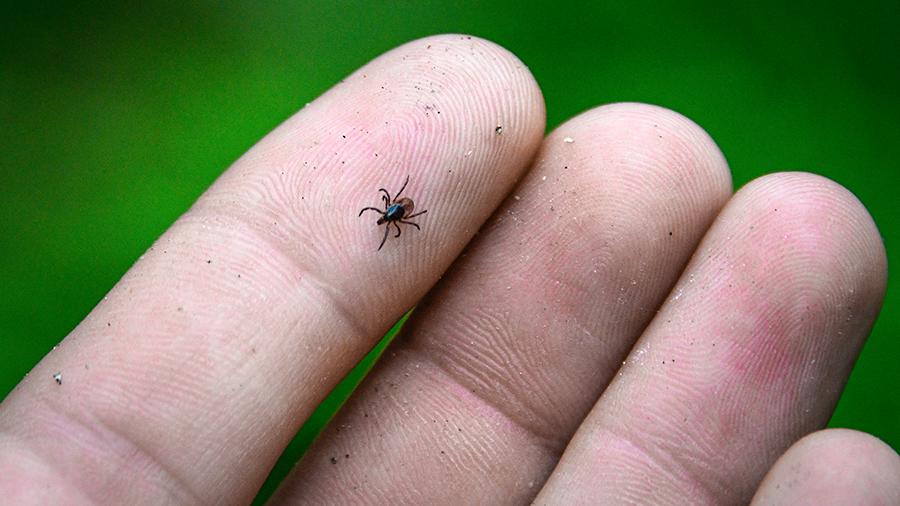
Most people find it complicated to define the bloodsucker or its nest since they are so tiny. And a common question can be heard: what does a wood tick nest look like?
Wood tick eggs are extremely small and are hard to spot, nevertheless, if we could examine them closer, we would see that they remind very small berries.
Since they are easily mistaken for other insects’ nests, it’s not advised to destroy anything that reminds a tick nest if one spots it in the forest since it can be a nest of an insect useful for the ecosystem.
Normally, wood tick habitat consists of wooden areas with the low-growing grass and bushes, open grasslands, and of course, along the paths and country roads.
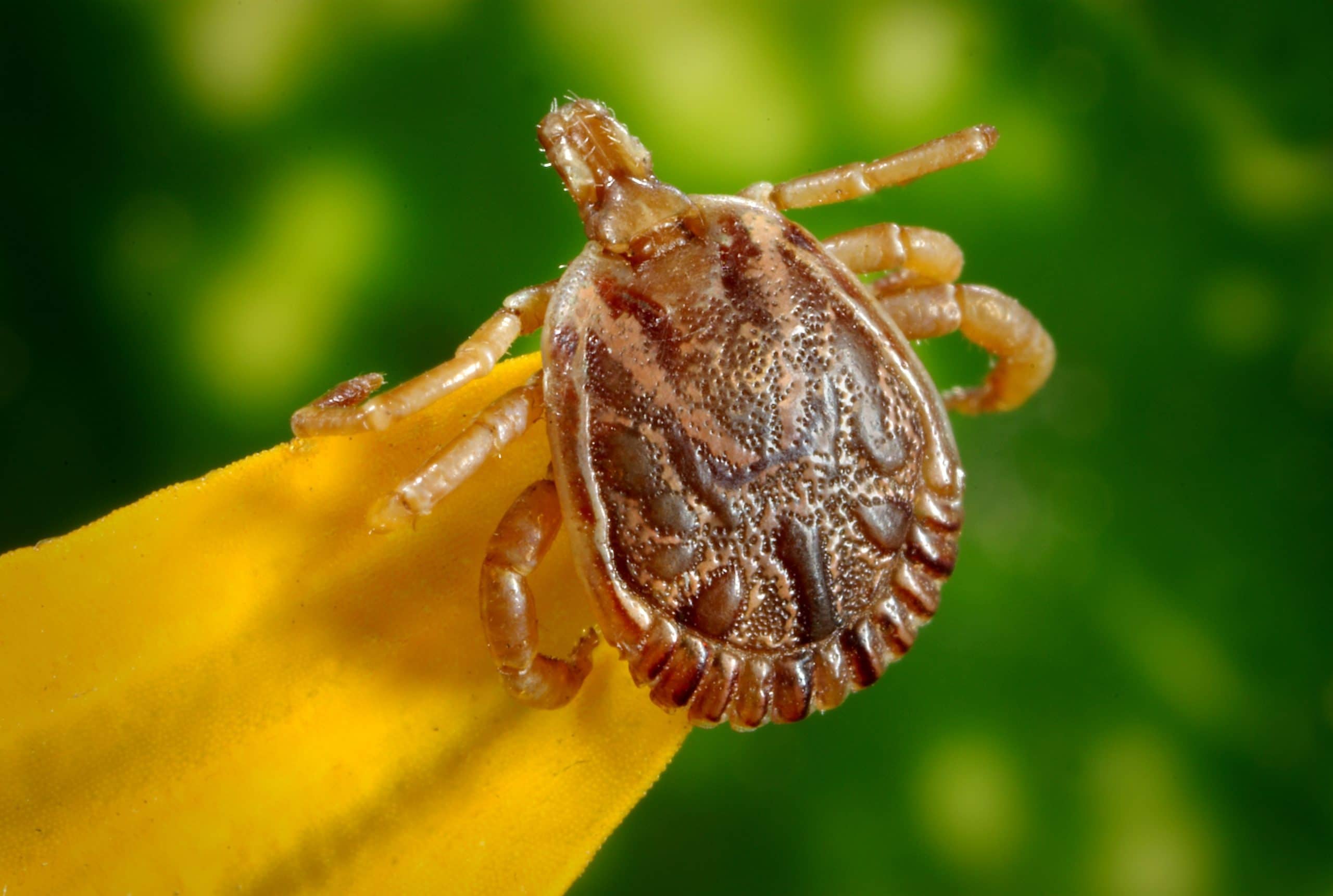
So be careful when going for a walk next time!
When Is Wood Tick Season?
A common wood tick has several stages of its lifespan as we know.
The dangerous ones are larvas and mature bloodsuckers who are active in autumn and spring respectively.
Nevertheless, those infectious beasts can be brought to our households in any season by the pets or our shoes.
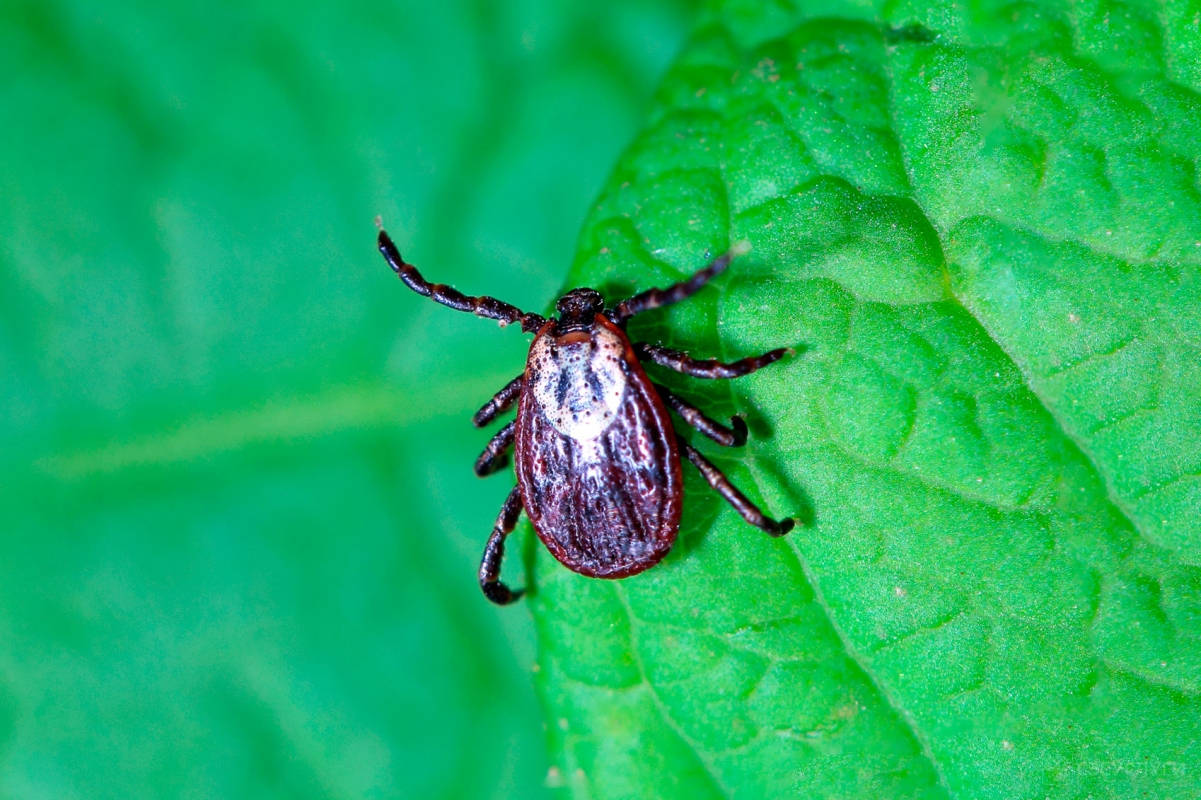
Are These Bloodsuckers Harmful To People?
Usually, those pests are not considered to be harmful by most of people. Nevertheless, it is necessary to remember that they transfer multiple serious infections like tularemia, Lyme disease, and spotted fever.
Besides, allergic skin reactions are also common aftermath for the bloodsucker’s bites.
Since some of these diseases may become fatal, the bloodsuckers must be beware of.
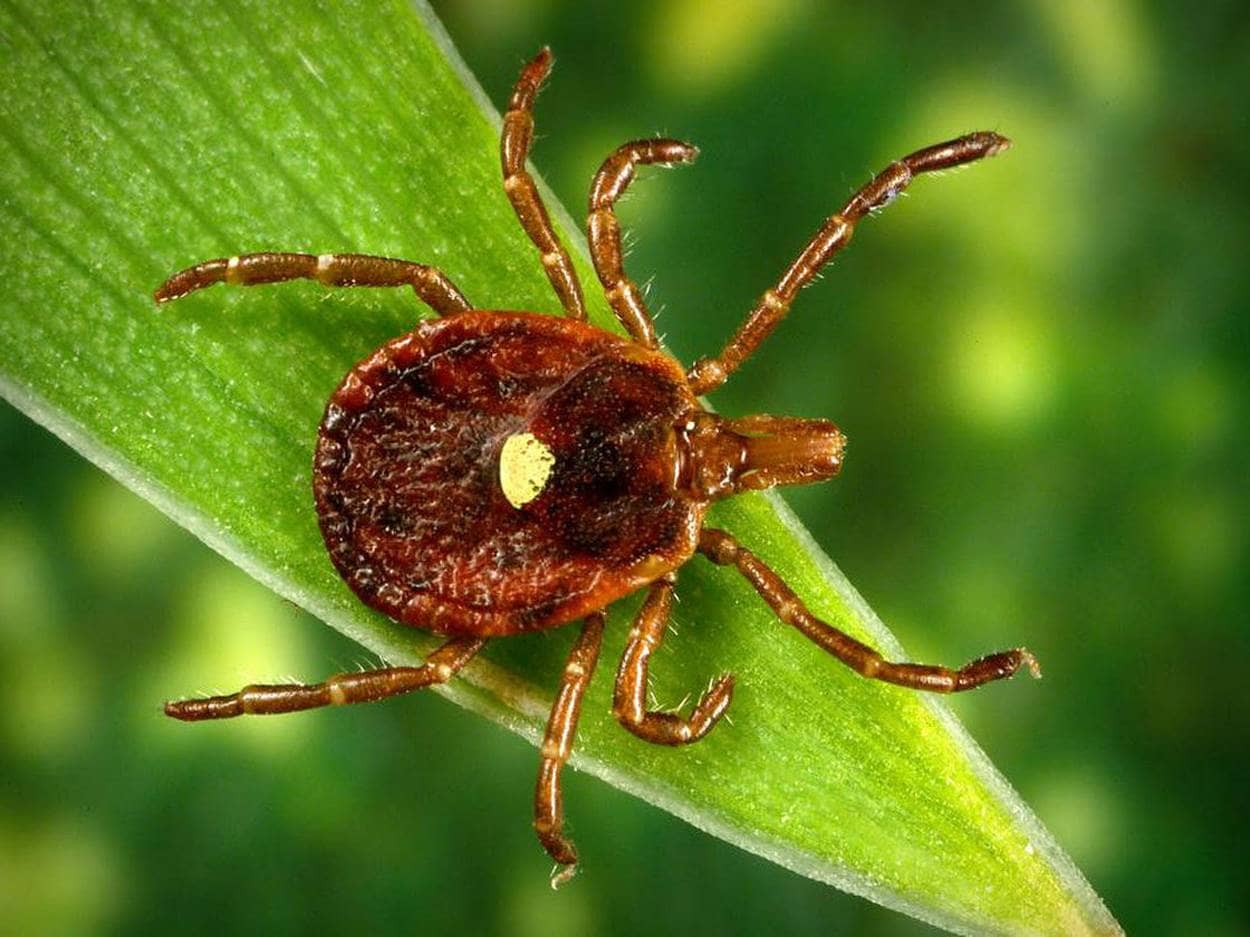
How to Fight Wood Ticks
Naturally, everyone needs and is looking forward to finding out how to destroy the pests at home and in the garden.
It is necessary to remember that, for better protection, you’d better have a wood tick repellent for pets and, in addition, a separate wood tick repellent for humans.
For pets, consult at the nearest pet shop or visit a veterinarian to prescribe a good cure for a dog or a cat to protect them from bloodsuckers without harming the animal.
As for yourself, we would advise purchasing a wood tick spray that is meant for this exact purpose instead of experimenting with various homemade means of protection.

Those may work, too, but who knows, how well they will work and whether they will at all.
For destroying the bloodsuckers in your home, use special sprays, too.
For the garden, clean the area, take away the debris, and cut the grass. Clean up the leaf litter, and toss the fallen leaves to the compost.
Like that, the favorite places of the bloodsuckers will be destroyed.
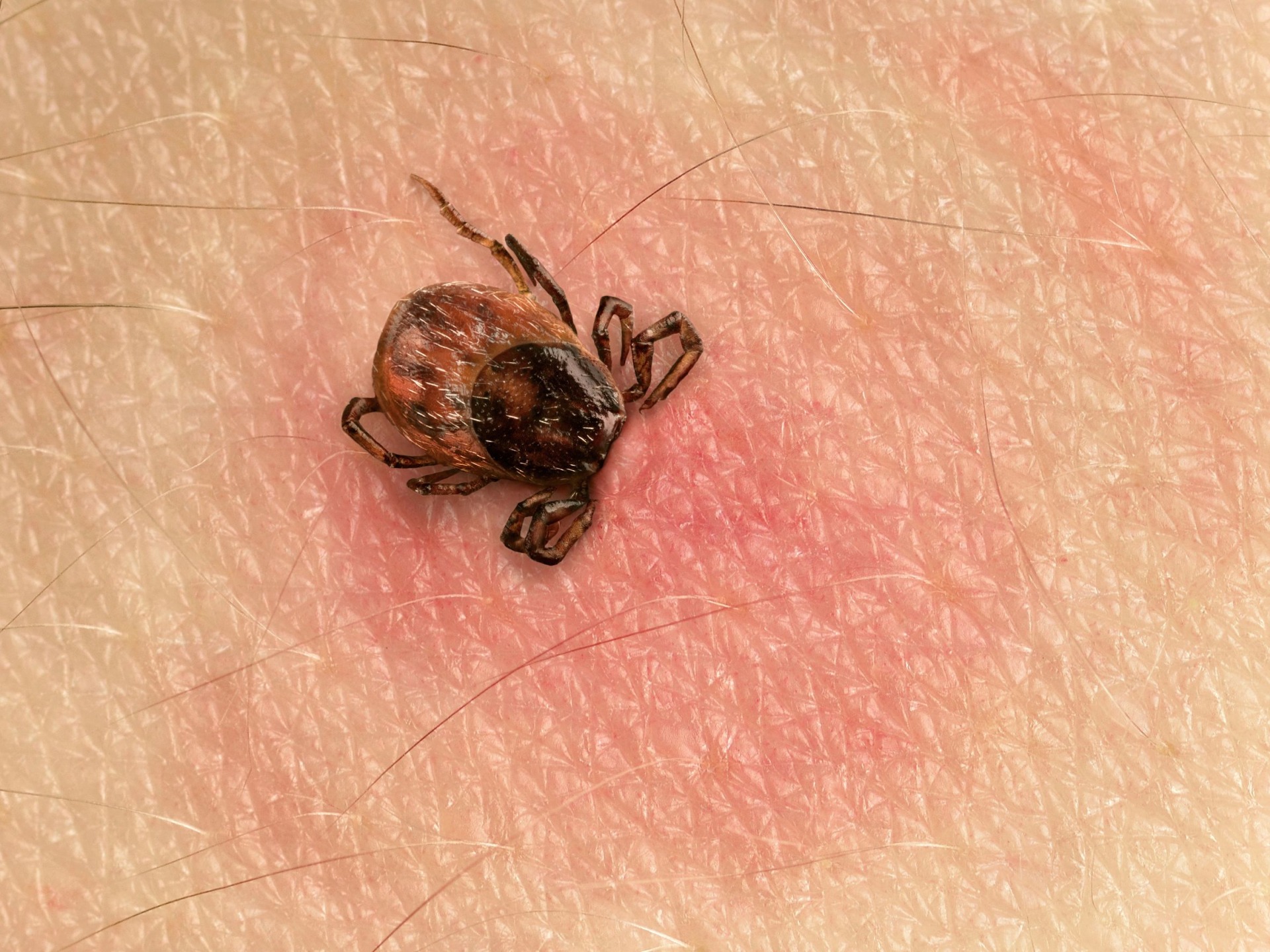
How to Take Out Wood Tick
If by any chance a pest was spotted on the skin, no panic.
If a wood tick is engorged, it will be simple to notice it since it enlarges.
- Prepare a wood tick removal tool – simple fine-tip tweezers will do.
- Gasp the bloodsucker the closest to the skin.
- Pull it upward carefully. Don’t push or twist to prevent tearing the body of the bloodsucker apart and leaving its half under the skin!
- Once the bloodsucker is deleted, treat the damaged zone and hands with rubbing alcohol.
Past the successful removal, go visit the doctor to make sure that no infection was transferred by the pest.

Wood Tick Or Deer Tick. Comparative Characteristics
Sometimes, people confuse wood ticks to the deer tick. However, these kinds have certain significant distinctions. For the deer tick and wood tick comparison, check out the brief list of their specific traits.
- For wood tick identification, pay attention to color since the adult pest if dark-brown with black legs
- The deer tick, on the contrary, has a red lower back
- As for the size, there are no significant differences that can be visually identified
- Deer ticks are active either in spring or summer (for nymphs and larvas) while adult ones are dangerous in spring and autumn.
Wood tick, instead, is active in spring and early summer when adult
- The major difference between deer tick and the wood tick is that the deer tick’s bite usually transfers Lyme disease and affects our nervous system, joints, and heart. Wood tick’s bite causes allergy and transfers spotted fever.

For this reason, beware of those bloodsuckers and protect yourself when being outside and especially in the wood. Wear high boots with high socks and pants, cover the body with a long-sleeved jacket, and always wear a cap or other head protection.
Read next : Tick Nest and What do Tick Eggs Look Like?
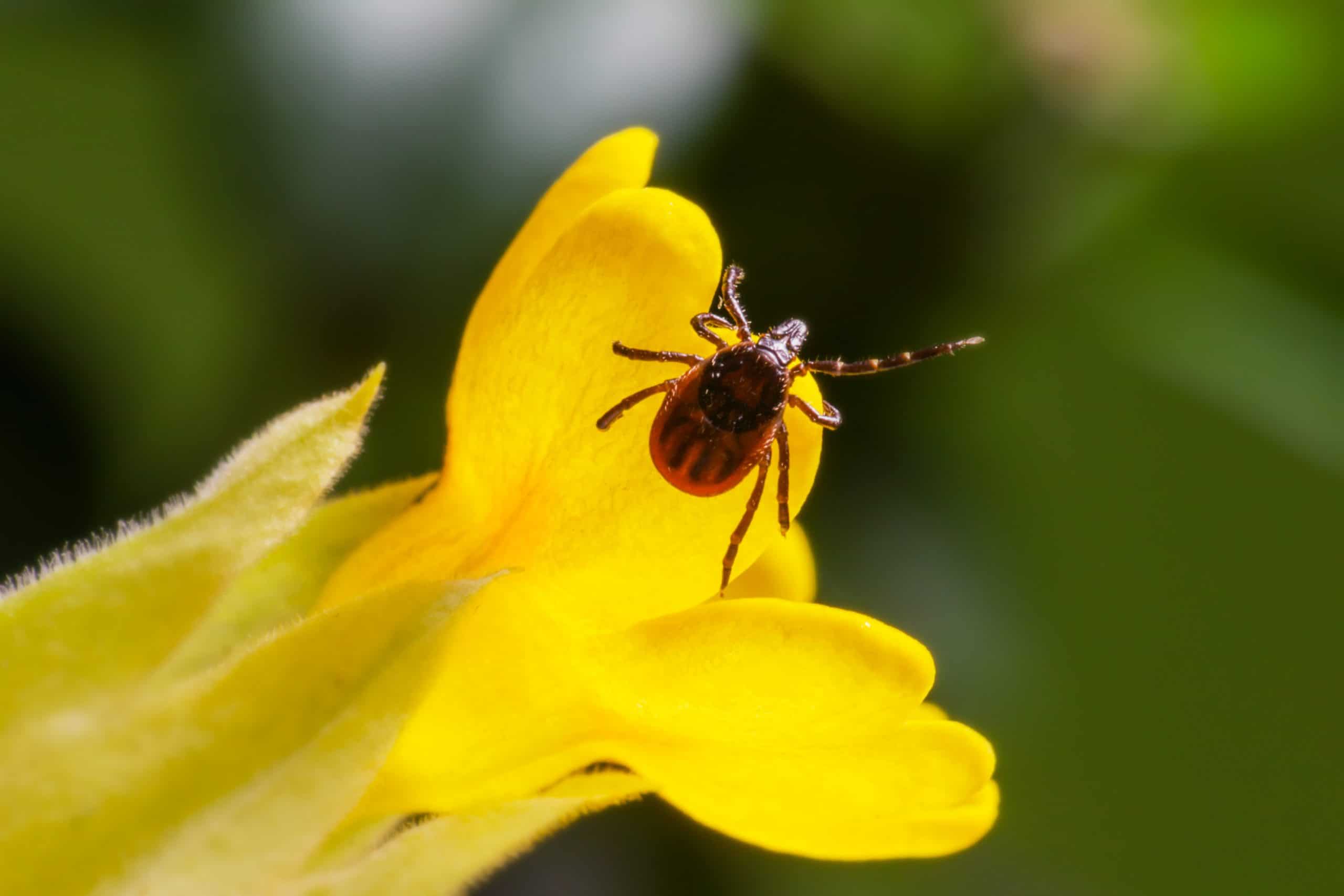
Can wood tick bite a dog and this is deadly for them?
I’m definitely sure that tick can bite a dog or a cat…but is it deadly – don’t know( Maybe if the tick was sick…so if you see the tick with a cough…run away))
How to remove a wood tick? We are going for a three day hiking tour and I know that area is a tick spot. What shall I do in case I find one on myself or on my kid?
Hi! Well, first you will have to remove it and for that tweezers with a fine end is the best thing. Just pull it out slowly with a steady pressure to not tear its head off! After the insect is out, cleanse the bite and your hands (rubbing alcohol or soap&water will be fine). But anyway, I’d recommend visiting a doctor afterward.
How to remove a wood tick from a dog? My german shepard is pretty furry, so how do I reach through all that hair?
I’m pretty sure the procedure is the same as for a human, only you will have to spread the dog’s fur first. But my advice is to take the animal to the vet to ensure everything is done correctly. Not all dogs are OK with us doing some manipulations on them. I don’t know how calm your dog is, but mine would rather bite my arm off if I try to do something like that, I swear!
Does anyone here have experience with tick bites? What does a wood tick bite look like? Is there any difference between this one and other ticks’ bites?
I guess it’s a small red bump similar to a mosquito bite. I know, however, that certain ticks (don’t remember which exactly) leave other marks that are called “bull eye”. Better ask your doctor anyway.
How to remove a wood tick head if it’s left in the skin after removal? Can that be done without the medical help?
Well, that is definitely better to be done by the doctor since tick’s head is a dangerous stuff to mess with! Honestly, I don;t know what to advise you in such a case because if you need to do that when you’re out in the woods somewhere…I guess you’d better ask your doctor, really!
I heard it’s pretty tricky to spot tick eggs. What do wood tick eggs look like in particular? Has anyone seen them?
I read that they remind poppy seeds or fish caviar only really tiny, reddish-brown in color. I’ve never seen that stuff myself though, so I might be mistaken.
How long can a wood tick live without a host? We extracted one from our dog and I’d like to keep it in a box to show to the vet (need to know if it’s dangerous). Will it last until then?
Oh, it will! Ticks can live without hosts for a month and some of them are able to survive even longer.
Why does my wood tick bite itch? I went to the hospital to extract the tick, and the bite was sanitized. But it’s itching a bit. Is it bad?
Why don’t you go to the doctor with that? It might be an allergic reaction, especially if you have any swelling.
My dog was bitten by a wood tick and now its red around where she was bitten? What shall I do?
You shall take her to the vet, of course. Was the tick removed? If not, then it must be done immediately. If it was, then maybe it’s an allergic reaction, or the insect was not extracted completely. The vet will tell you for sure.
How to detach a wood tick from your skin?
If you can, go to the hospital and have it removed there. But if there’s no such opportunity, then pull it out carefully with tweezers trying to not tear the tick head off. And then sanitize the bite and your hands with rubbing alcohol or just soap and water. And see the doctor!
I want to buy some tick repellent, but I’m not sure what kind of it I need. What species is a wood tick classified as? Is it a bug or a spider? What product to choose?
I guess there are special repellents made for killing ticks. But you were right, these bloodsuckers belong to the spiders species.
What is the difference between a wood tick and deer tick? Is it possible to define them visually?
Well, a deer tick has a red lower back while a wood tick’s one is black.
Hey! Has anyone here ever been through the tick bite? How soon will symptoms appear from a wood tick bite?
My doctor told me that from three to thirty days may pass after the bite of an infected insect.
How long can a rocky mountain wood tick survive without feeding? We extracted one from our dog and want to show it to the vet to tell if it’s harmful. Will it survive for a week or so in a box?
Of course it will last for a week, and even longer. These beasts can live for months without food.
Help needed! What to do if you have a wood tick? I can’t go to the doctor right now but I’m also afraid to extract it myself!
I guess the best is to make an appointment asap and have it extracted by a doctor, but ticks (if undisturbed) can feed for around a week and that won’t be painful. So go to the hospital as soon as you can, and until then just try to not disturb it. Or ask someone to pull it out for you.
What is a wood tick called in norwegian? We’re going to Norway for summer holidays and I know the area we will be camping at may be full of ticks. So how do I tell the locals if I’m bitten?
In Norwegian, “wood tick” sounds like “treflot”.
I heard ticks can be defined by their color. What does the underside of a wood tick look like? If I find one myself, how do I know which species it is?
Hell knows! I’d never examine them to be honest. It’s a tick, it must be got rid of!
How to clean a wood tick bite after the insect is extracted safely and if you’re not in a hospital?
In my family, we usually go for some rubbing alcohol which is a super remedy! But also, you can use soap and water. Both work well for cleansing hands, too, by the way.
Our yard is invaded with ticks every year! I tried several methods like traps etc, but nothing works well enough, they still come back. How to kill a wood tick? Do you have any tips?
I only know how to kill it after extracting (drowning it in alcohol works perfectly). But I don’t think that will work for the garden or yard, I mean, you won’t flush alcohol all around! Perhaps, it’s better to call the pests control or something?
How to treat bad reactions from wood tick bites? It’s red and itching, and a bit swollen. Thanks!
It might be an allergic reaction. If the insect was extracted safely and completely, and the bite was cleansed and sanitized, then these symptoms may disappear in several days. But anyway, I’d recommend you visit the doctor.